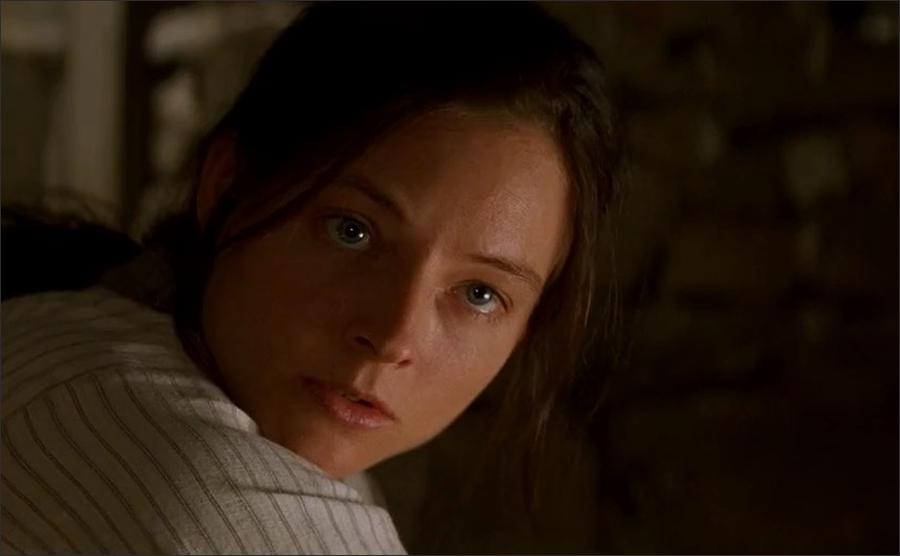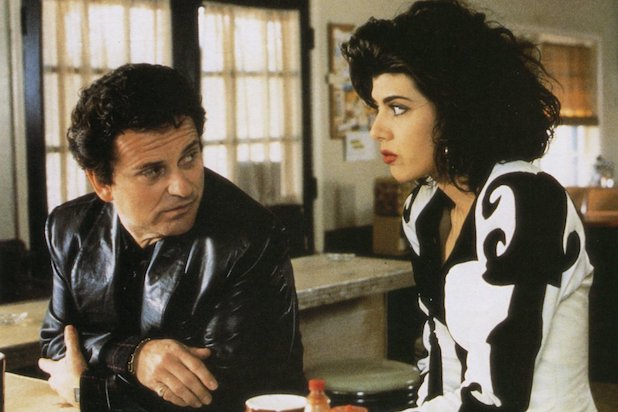
Another one of my choices, if for no other reason than that
it was the very first Fox Searchlight Film – even though the official intro
wouldn’t come along until later.
I first saw The
Brothers McMullen back in the summer of ’95, after getting newly hired at a
local TV station. With a windfall of brand-new, disposable income, I went to
the movies and saw everything…. everything.
Fortunately, there was a lot of good stuff hitting the
screens back then, because ’95 was smack-dab in the middle of the indie film
boom of the 90s – a sort of cinematic renaissance ushered in by maestros like
Tarantino and Soderbergh. And McMullen was
a part of that indie subgenre of quality films made on the cheap, films that
also included El Mariachi ($7,000)
and Clerks (17,000). McMullen, with its comparatively lavish
budget of $24,000, came with a success story typical of so many labors of love:
writer/director, with a PA at Entertainment
Tonight, made the film after-hours, using company equipment, and solicited
his product to ET guest Robert
Redford, the creator and organizer of the Sundance Film Festival. And the rest
is history.
But back to me. I caught the flick at the Towne 16 in Egg
Harbor Township. And, as usual for me back then, a recent NYU film school
graduate, I admired the craftsmanship of the film and its low-budget
earnestness while at the same time being bored by all its relationship talk.
Yeah, I was single, and in my early-twenties – not that far removed from the
late-twentysomethings that inhabit the McMullen
world – but I literally had no clue about women, nor could I possess a real
understanding of the interpersonal drama that fuels the film. Just a lot of
blah-blah about pregnancy, affairs, marriage, dating, etc… Now where was Die Hard 3 playing?
Of course now, for better or worse, I’ve fought in the
trenches of love, battle scars and all, and I have a far greater appreciation
for the film. I get now what the brothers are going through, and observe with a
knowing smile all the peaks and pitfalls that they find themselves in. To
paraphrase Mark Twain, I am truly amazed at how much better The Brothers McMullen has become after
27 years!
It is, as the title implies, all about the Irish-American
experience, specifically a trio of second-generation brothers, all in different
relationship stages, whose pappy has recently died and whose mom has decided to
return to the Emerald Isle for no apparent reason. The eldest bro, Jack, is
married to a fine woman named Molly, but is tempted to cheat by a vixen named
Ann. He’s got more troubles: his younger siblings want to move back in.
Ne’er-do-well Barry needs a place because he’s just broken up, and his ex
rented out their apt to a woman named Audrey (whom he’s interested in). And
other bro Patrick, the staunchest Catholic among them, is engaged to a woman
named Susan, but her plans to cohabitate don’t sit well with his morals, and
he’s certainly not ready to marry. But is he just using his religion to cover
up his fear of commitment?
Things go from bad to worse for the McMullen family. Jacks
goes ahead with he affair, only to have his indiscretion discovered by Molly
(the ol’ telltale condom). Pat goes crawling back to Susan, but the breaks up
again at the prospect of cruising cross-country with an old “friend,” the local
female auto mechanic. And Barry keeps after Audrey until they start something
up, but his prospects out West as a screenwriter may mean their breakup. Ah,
but never fear: Barry won’t repeat his father’s sins (whom we discover to be a real louse), and makes a
sacrifice for love. And Jack ends his tryst once and for all, with his wife
willing to forgive and forget (yeah, right). All’s well that ends well, and so
long as the Guinesses keep coming.
My salient reaction to the film this time around has to be
that I enjoyed the film, and that
enjoyment is mostly due to the fact that I liked
these characters. And that’s really saying something for a film about people in
their twenties talking about relationships. Mist films of this ilk – usually
Hollywood productions – are excruciating to get through because their
characters are so self-absorbed, and so self-consciously hip. Every time they
open their mouths I just want to tune them out. But McMullen’s cast is comprised of real people, people who mostly say
what they mean, and don’t have to make a zillion pop-cultural references to
sound clever. And director Burns is smart enough to shuttle back and forth
among the three stories with just enough frequency that each doesn’t get too
labored. The common thread, of course, are the brothers with each other, ad
their beers, which acts as sort of Greek Chorus several times throughout.
Of course, the “twist” here is that we’re talking about
young Irish-Catholics, and how their religion often collides with the mores of
post-sexual revolution America. Patrick probably epitomizes this the most: his
guilt and confusion over how to deal with his marriage-ready Jewish fiancé is
played mostly comical but with a troubling undercurrent. And if ther breaking
up, getting back together, breaking up pattern feels a bit unstructured, well,
isn’t that how relationships are? They don’t always have the tidy rhythms of
plot, and in a film like McMullen, they
probably shouldn’t.
Ironically, it’s Burns own story that comes off as the
weakest of the three. His Barry, who won’t ever settle down with one woman
feels like old hat, and his neurotic ponderings and schticky voice-overs are
entirely reminiscent of Woody Allen, a similarity none to accidental I’m sure. But
all that could be forgiven were it mot for one neary fatal flaw – his casting
of model and real-life girlfriend Maxine Brahns as his on-screen love interest
(Audrey). She’s a poor actress – let me just say it outright – so poor in fact
that it calls to mind Sofia Coppola’s amateur work in The Godfather III. Her scenes were the only ones that really called
attention to its low-budgetry, something I hated being reminded of. Fortunately
most of this occurs toward the end, after the dramatic heavy-lifting had
already occurred by the rest of the far more accomplished cast.
Am I being too hard on her? Perhaps, but that’s only because
I hold the rest of the film in such high regard. Everything about McMullen just feels pitch perfect – its
style, its theme, its tone (adding just the right amount of Irish music to key
scenes to tie it to the motherland). And there’s an earnestness, too, that
imbues its indie cred with a sense of purpose. I was reminded of the early
films of John Cassavettes as I enjoyed McMullen
– here, as in those films, the stripping down of human life, and the laying
bare of all its frailties and complexities, is what makes it such a necessary film. And that’s one of the reasons we all go to
the movies, isn’t it?
Burns would go on to direct more polished, mainstream
flicks, but none would top the potency of his debut effort. Such seems to be
the case with most directors. So skip She’s
the One and No Looking Back and
go with where it all began.
Rating: ****








